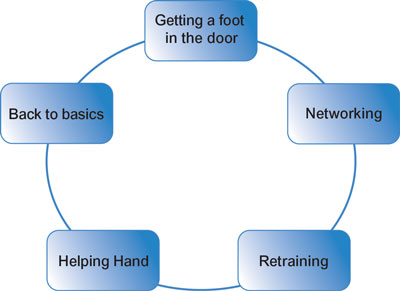5 Strategies for returning
Returners from career breaks have different ways of presenting their stories to prospective employers and no single way is the right way. Sometimes it might be a good approach to emphasise the continuity between different parts of your working life; alternatively, you might be at a point where you want to take a new direction and so your story will be one of change. It all depends on what makes the most sense to you and how you want others to interpret your career history.
As you progress further through this course, you’ll realise that there are a lot of common experiences and barriers facing those who are returning to STEM. Learning from the experiences of others in the same boat can be really helpful and you’ll be looking at how you can strengthen your support networks later in the course. In this section, you will look at what has worked for others returning to STEM, and consider some of the strategies they used to get back to work.
In a survey carried out by Open University researchers, 167 women who had returned to STEM after a career break (‘returners’) were asked what had helped them succeed in getting back to work. While the types and fields of work they went back into varied enormously, the survey found five main strategies that had helped them (Herman, 2015). Figure 2 provides a summary of the strategies that have worked for others in your situation. You will be looking at these strategies in more detail in the next sections and returning to them as the course progresses. We will also give some examples of real life stories.

